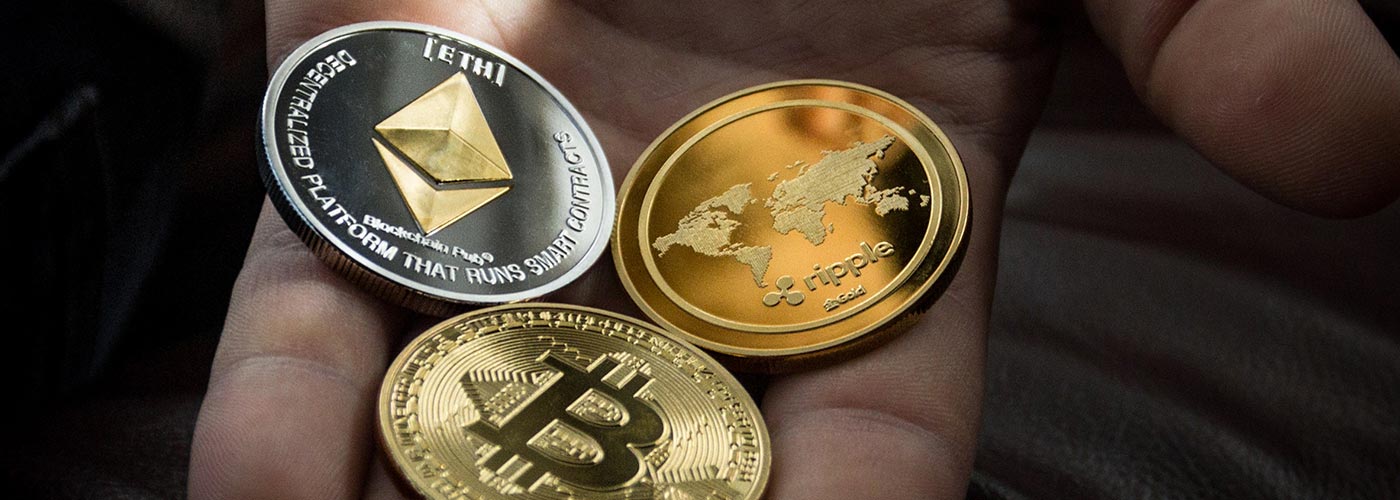We pick up today where we left off yesterday in our guide to alternative cryptocurrencies, or “alt-coins.”
Yesterday’s missive was all about Polkadot, a crypto network not unlike a TV network in that it serves as the pipeline bringing you the service you want. (You can check out yesterday’s article here.)
Today we’re talking about VeChain. It is also an alt-coin, though it is a service provider on a network. In keeping with our TV analogy, it’s the show—the reason people tune in.
So, today we learn a bit about the services side of the alt-coin universe…
VeChain (its token is VET) has built a unique service that has a huge potential audience in global supply-chain management.
If you’ve ever seen a street vendor hawking Louis Vuitton bags or Rolex watches, you know those products are 729% fake. The Organization for Economic Cooperation and Development estimated in 2016 that half a trillion dollars in pirated goods trades hands every year.
VeChain addresses that.
Its token is used to track the progression of goods from initial production all the way to the end consumer. This could be a Rolex, or it could be beef from Uruguay or milk powder from New Zealand or pharmaceuticals from a Merck production plant in New Jersey.
Because the data is on the blockchain, it is immutable…meaning it cannot be altered or falsified. And in a world of fakes and forgeries and food-borne illness, that offers some very unique, never-before-seen opportunities for companies and their consumers.
Soon enough, we will live in a world where each of us as consumers can point our smartphone at a barcode and learn with certainty that the underlying product is 100% authentic…or in the case of food and pharma, that the product has never exceeded a particular temperature range or been tampered with, or whatever metric is relevant. VeChain’s tech can track anything, from health records to carbon emissions.
That’s what I call “crypto as a service.” The token has a very real utility, serving a significant need in the massively large world of global supply-chain management.
To give you an idea of just how excited industry is about this tech, consider some of VeChain’s current partners: auto giant BMW; LVMH, the French consumer-goods company behind Louis Vuitton; Walmart China; global fashion retailer H&M; accounting juggernaut PwC, which will use VeChain tech to help clients with track-and-trace needs. There are too many others to list.
How do VeChain’s tokens rise in value?
Companies that want to use VeChain’s tracking technology will have to buy and consume the cryptocurrency VET. Thus, as demand increases for VeChain’s services among companies with critical supply-chain management issues, VET rises in value. (As I noted yesterday, none of the names I mention are necessarily recommendations. VET is just a great example of “crypto as a service.”)
There are similar opportunities all over the cryptoconomy and they’re exploding in number. They include services such as:
- Decentralized exchanges, known as a DEX, which is essentially no different than, say, Fidelity or Charles Schwab. It’s where buyers and sellers gather to trade crypto without a middleman.
- Oracles, which link analog, real world data to the blockchain to be used in so-called “smart contracts”—contracts that activate automatically once certain parameters are met. (I’ll send you another column soon about smart contracts and how they’re changing the world.)
- Non-fungible tokens—the recently infamous NFTs that have caused such a commotion in the art world. These go way behind art, however. They will be part-and-parcel of your everyday life soon…representing everything from movie and airline tickets to real-world property that you can buy and sell on the blockchain.
There are so many more examples. I could spend a month writing to you every day about unique alt-coin networks and services that are emerging, and which will likely have tremendous value in time.
Which ultimately gets to my point: We can’t look at crypto as just bitcoin and Ethereum, and we can’t look at crypto as a punter looks at the Euro 2020 soccer tournament now underway (for which I bet a whopping $5 online that Belgium would win the whole shebang—not the shrewdest investment I ever made, given their quarterfinal exit to Italy).
By which I mean, this isn’t about gambling on this coin or that coin. We have to consider the projects just as we would consider the products and services that Amazon or Apple or American Airlines offers before we invest in them. It’s identical in the crypto space with alt-coins.
Some alt-coins will never amount to anything (I’m looking at you, Dogecoin and Shiba Inu). Others offer real services that increasing numbers of consumers and businesses will likely use.
Own those alt-coins early, willingly acknowledge and accept that the ride from here to there is going to a hellish rollercoaster, and the great likelihood is that you will turn a relatively small investment in alt-coins into potentially life-changing gains.

